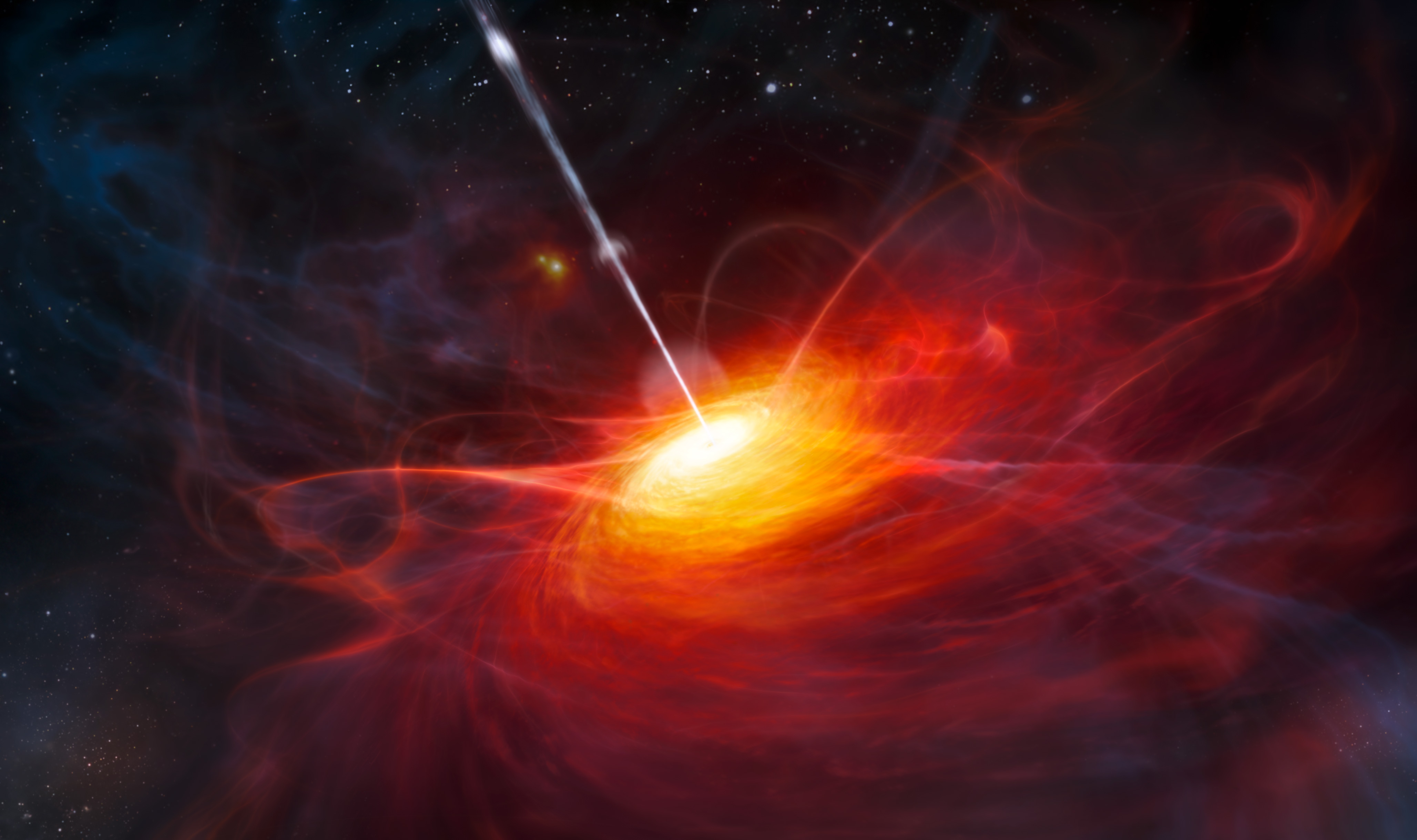Quasars: The Cosmic Lighthouse
 Hunter
Hunter
Have you ever looked up at the night sky and wondered about the twinkling lights? Among these celestial bodies, there’s a particularly fascinating and powerful phenomenon known as a quasar. Quasars are like cosmic lighthouses, beaming incredibly bright light across the universe. But what exactly are they, and how do they affect the galaxies they inhabit? Let’s dive into the world of quasars in a way that’s easy to understand.
What is a Quasar?
Imagine the sun, but a million times brighter and much, much farther away. That’s a quasar for you. Quasars are incredibly bright objects found in the centers of some distant galaxies. They are powered by supermassive black holes, which are like cosmic vacuum cleaners with an insatiable appetite for galactic material such as gas, dust, and even stars.
The Powerhouse: Supermassive Black Holes
At the heart of a quasar is a supermassive black hole. Unlike the black holes you might have heard of, these are enormous, with masses that can be billions of times that of our sun. Despite their name, black holes aren’t just about sucking things in. As material spirals into a black hole, it heats up and releases a tremendous amount of energy. This process is what makes quasars the brightest objects in the universe.
The Brightest Beacons
Quasars are so bright that they outshine their entire galaxies. They emit light across a wide range of frequencies, from radio waves to visible light to X-rays. This light is so intense that we can see quasars that are billions of light-years away, making them valuable tools for astronomers to study the early universe.
Quasars and Galactic Matter
Now, here’s where things get really interesting. While quasars are known for their incredible brightness and energy, they also play a significant role in the distribution of galactic matter.
The Galactic Fountain
As the black hole at the center of a quasar consumes material, it doesn’t just keep everything to itself. Some of the material gets so hot and energized that it escapes the black hole’s grasp before crossing the point of no return (known as the event horizon). This material is ejected back into the galaxy at high speeds, in a process that can be likened to a cosmic fountain.
Spreading the Wealth
This ejected material from quasars can travel vast distances and eventually mingle with other galactic matter. It can contribute to the formation of new stars and even spread elements essential for life, like carbon and oxygen, throughout the galaxy. In a way, quasars help in recycling and redistributing material within their galaxies.
Beyond the Galaxy
In some cases, the energy and material ejected by quasars can reach beyond their own galaxies. This process can influence neighboring galaxies and contribute to the large-scale structure of the universe. It’s like a cosmic dance, where quasars play a pivotal role in the ever-changing cosmos.
Conclusion
Quasars are not just distant, bright spots in the sky; they are dynamic and influential parts of our universe. They demonstrate the incredible power of black holes and their ability to affect their surroundings in profound ways. By studying quasars, astronomers can learn more about the life cycle of galaxies, the distribution of matter in the universe, and the early stages of cosmic evolution. So, the next time you gaze at the stars, remember that among them are these fascinating cosmic lighthouses, playing their part in the grand cosmic ballet.
Subscribe to my newsletter
Read articles from Hunter directly inside your inbox. Subscribe to the newsletter, and don't miss out.
Written by
